Wide-Diameter Dental Implant
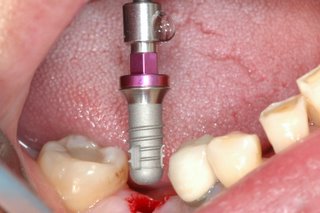 Wide Diameter (WD) Dental Implants:Used on 5.0, 5.5 and 6.0mm implants.WD implant implements a balanced design approach to achieve the best overall performance in
Wide Diameter (WD) Dental Implants:Used on 5.0, 5.5 and 6.0mm implants.WD implant implements a balanced design approach to achieve the best overall performance in 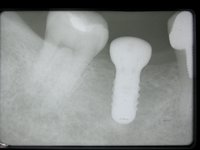 compressive occlusal forces, off-axis occlusal forces, and torsional forces applied during implant placement. The WD external hex provides 79% more surface area than the standard hex size for unparalleled strength in implant seating. It is designed to reduce deformation or stripping of the hex during implant placement.The WD implant connection offers surgical and restorative advantages including increased prosthetic stability and provides more surface area for torsional strength.Corresponding WD prosthetic components offer the advantage of a larger table for increased prosthetic stability, as well as a larger abutment screw to virtually eliminate screw fracture and resist loosening. 2.5mm abutment screw provides 65% more strength over the standard 2.0mm screw for additional resistance to off-axis loads and improved torque retention. 1mm tall hex provides 43% more height over the standard hex for additional prosthetic stability, which is particularly important for single tooth applications. The WD implant enables bilateral cortical bone engagement in wide ranges, especially in posterior regions.
compressive occlusal forces, off-axis occlusal forces, and torsional forces applied during implant placement. The WD external hex provides 79% more surface area than the standard hex size for unparalleled strength in implant seating. It is designed to reduce deformation or stripping of the hex during implant placement.The WD implant connection offers surgical and restorative advantages including increased prosthetic stability and provides more surface area for torsional strength.Corresponding WD prosthetic components offer the advantage of a larger table for increased prosthetic stability, as well as a larger abutment screw to virtually eliminate screw fracture and resist loosening. 2.5mm abutment screw provides 65% more strength over the standard 2.0mm screw for additional resistance to off-axis loads and improved torque retention. 1mm tall hex provides 43% more height over the standard hex for additional prosthetic stability, which is particularly important for single tooth applications. The WD implant enables bilateral cortical bone engagement in wide ranges, especially in posterior regions.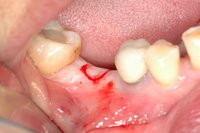

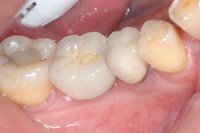

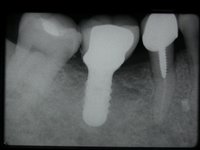 >>> 2 years later!
>>> 2 years later!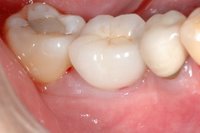
>>>above photo:A Flapless Appraoch with Lifecore® 4.8 WDS (photoright by Dr. Perio)
@ Another case: 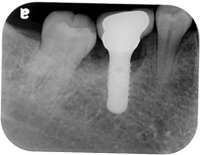
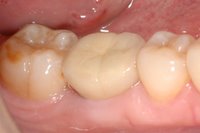
Hints>>Implant size: Selecting the proper implant size in relation to the size of the missing tooth is a valid rule. In other words, the more the similarity between the diameter of the implant and the diameter of the missing tooth at the bony crest, the greater the esthetic outcome.
Int J Periodontics Restorative Dent. 2001 Apr;21(2):149-59.
Wide-diameter implants: new concepts.
Davarpanah M, Martinez H, Kebir M, Etienne D, Tecucianu JF.
Department of Periodontology, Pitie Salpetriere Hospital, Paris, France.
At the end of the 1980s, it was suggested that wide-diameter implants be used to better the prognosis in cases in which the condition of the supporting bone is unfavorable. Technical improvements associated with different shapes and materials used for implants have led to an evolution of our concepts of surgical and prosthetic treatments. The aim of these new suggestions is to optimize the functional and esthetic result while respecting the fundamental principles of osseointegration. Up to the present time, very few studies have been published on wide-diameter implants. However, the short- and medium-term results that have been reported have been very satisfactory.
Current Topics in Dentistry
What are the clinical limitations of wide-diameter (4 mm or greater) root-form endosseous implants?
Compend Contin Educ Dent. 1997 Jul;18(7):687-92, 694; quiz 696.
Biomechanical advantages of wide-diameter implants.
Jarvis WC.
In implant cases in which bone quantity and interdental space are sufficient, wide-diameter implants may be preferable to standard-size implants in restoring the partially edentulous patient. Although wide-diameter implants are often considered for their esthetic possibilities, they can also offer important biomechanical advantages, particularly in reducing the magnitude of stress delivered to various parts of the implant and in improving stability. In this article, standard 3.7-mm- and wide 4.7-mm-diameter implants are compared and discussed.




0 Comments:
Post a Comment
<< Home